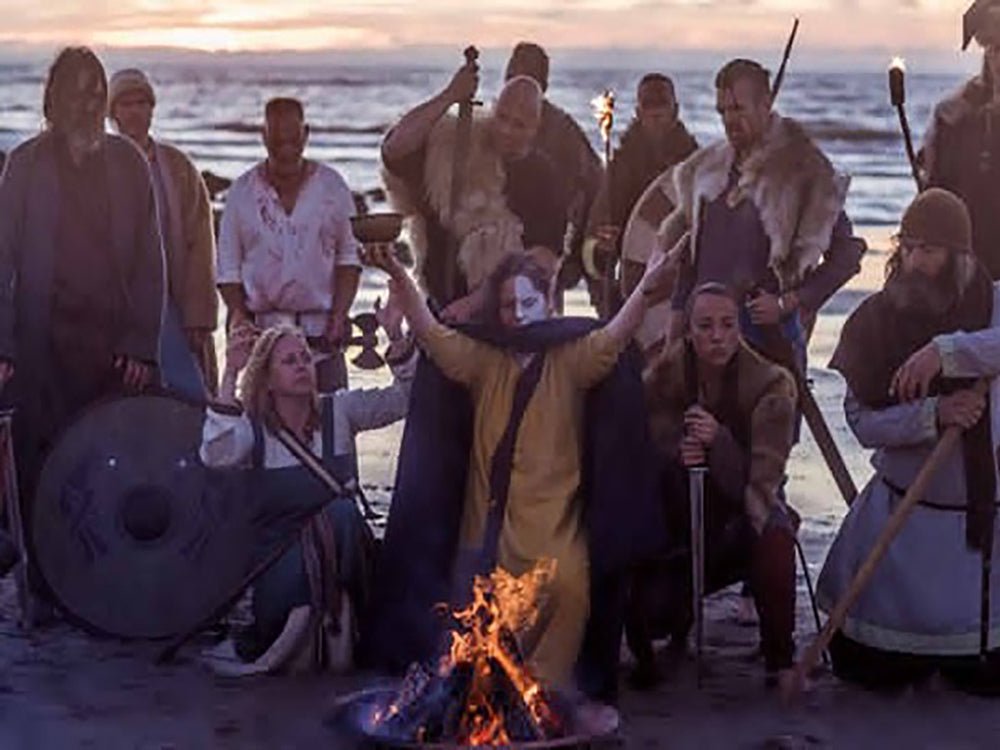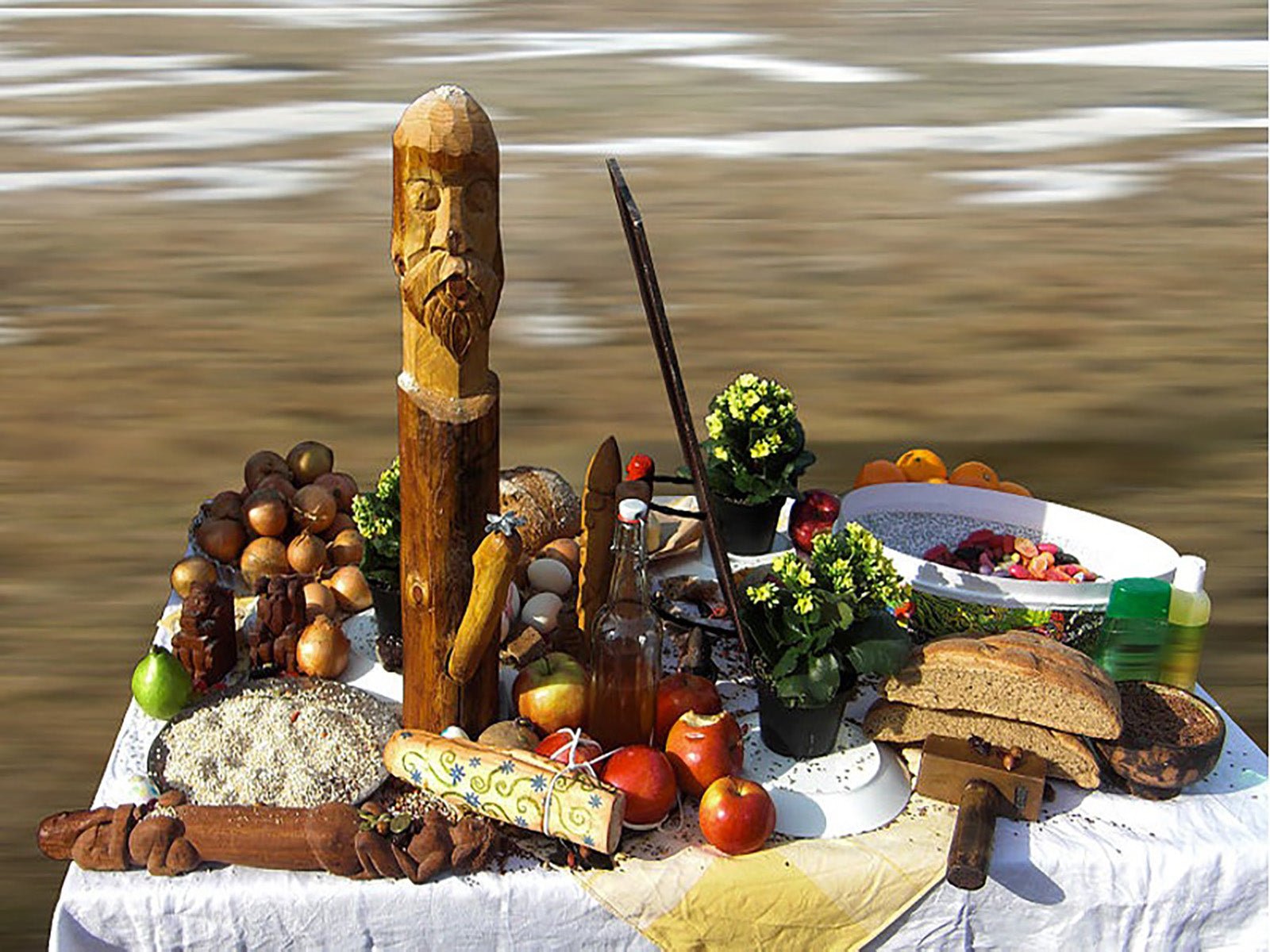
Blood sacrifice was a central part of many Viking rituals, from established yearly celebrations to pre-battle rallying. While we know that sheep, cows, pigs and goats would often find themselves on the sacrificial altar, this begs the question, did Vikings ever sacrifice humans?
Human sacrifice was common in pre-Christian Europe. We know that it happened in Ancient Greece, Rome and Celtic communities, and there is evidence that Vikings practised human sacrifice too. The idea has become so ubiquitous that we can find human sacrifice as a common trope in movies and TV shows set in Medieval Scandinavia, such as “The 13th Warrior” and “Vikings”.
What isn’t clear though is how often humans were sacrificed in Viking culture, and when and why they would have engaged in this practice. We also need to call our historical sources into question to ask which are facts and which are pure fabrication.
Routine Rituals

So, when and why were blood sacrifices used in Viking culture? Sacrifices, known as Blót in Old Norse, were an integral part of many religious and cultural rituals in which Vikings would leave an offering for the gods in exchange for luck, favour, or prosperity. Animal sacrifices were a routine part of many yearly celebrations, including Yule and Midsummer, when livestock animals such as cows or pigs would be slaughtered on an altar and eaten as part of a community feast.
Outside of seasonal festivities, a priest could be called upon to carry out a blót when a community, family or individual Viking was facing some kind of difficulty. In these situations, the sacrifice would be in exchange for better weather, a good harvest, success in battle or even help in getting pregnant.
There is no evidence that human sacrifice was used as part of any yearly celebration, nor would most priests have agreed to sacrifice a human at the behest of a single, struggling family. There is, however, some evidence that captured warriors from a vanquished army may have been ritualistically killed to thank Odin for success in battle. This practice is described in several sagas and has been backed up by archaeological findings near Viking battle sites. Of all the tales of human sacrifice in Viking culture, the practice of ritualistically killing captured foes is the most widely accepted by historians.
Travellers’ Accounts

While battlefield sacrifices are backed up by credible written and archaeological sources, most descriptions of human sacrifice by Vikings come from less-than-trustworthy foreign accounts. Since the Vikings left us very few written texts, a lot of the more detailed sources explaining Viking life actually come from travellers and traders from abroad. This throws up some big issues when it comes to texts about religion and rituals. Many of these accounts were written by Christian clerics from elsewhere in Europe who had a vested interest in making Norse pagans look brutish, violent and immoral. In many cases, it’s not even clear if the writer had ever been to Scandinavia or if their accounts of ‘witnessing’ religious rites, or even human sacrifices, are pure works of fiction.
One of the best-known descriptions of a Nordic human sacrifice was written by 11th-century German bishop, Thietmar of Merseburg. His famous Chronicle Thietmari includes one particularly raucous scene depicting a Viking ritual at Lejre, the religious centre of Viking-age Denmark. This ritual supposedly takes place every nine years and sees the pagan priest sacrifice ‘99 people and just as many horses, dogs, and hens or hawks, for these should serve them in the kingdom of the dead and atone for their evil deeds.’
Though there is no evidence from any Scandinavian source that this festival really took place, it pops up again an account by another German monk, Adam of Bremen, writing 50 years later. He writes about a sacrificial tradition at Gamla Uppsala, an important temple in Sweden, where Vikings supposedly met every nine years to sacrifice nine males of each living creature, including humans, to the gods Odin, Thor and Frey.
Adam and Theitmar’s descriptions of human sacrifice are generally considered by historians to be purely Christian propaganda with little, if any, factual backing. That isn’t to say, however, that there aren’t any foreign accounts of human sacrifice that hold any weight. Ahmad Ibn Fadlan was an Arab traveller and trader who acted as an emissary from the Abbasid Caliphate to the Rus, a Viking civilisation on the Volga River. In his travel account, he writes a detailed description of a slave girl being ritualistically raped and sacrificed at the funeral of a Viking chief. Historians generally take Fadlan’s account more seriously than the likes of Adam and Theitmar since he didn’t have the religious incentive to paint the Vikings as backwards or immoral.
Archaeological Findings
Another reason that Ahmad Ibn Fadlan might be our most reliable written source when it comes to human sacrifice in the Viking-age is that the idea of ritualistic killings at funerals is backed up by archaeological evidence. Excavations in Lejre in the mid-20th Century unearthed two male skeletons, one of which was dressed in armour and surrounded by weapons and jewellery, whereas the other was tied at the hands and feet and decapitated. A similar grave was found in Dråby, Northern Jutland. In this instance, archaeologists found a woman dressed in fine fabrics and jewels, alongside a decapitated male skeleton with no grave goods of his own. Both graves are interpreted as a noble person buried with a sacrificed slave, meant either to serve them in the afterlife or killed as an offering to the gods on the deceased's behalf. This kind of funeral sacrifice is consistent with Fadlan’s account.
Elsewhere in Denmark, archaeologists have unearthed further evidence of sacrifices away from the battlefield. The most famous was discovered in Slagelse in western Zealand, where a dig at the Viking fortress Trelleborg uncovered four skeletons of children aged 4 to 8 buried in a well along with jewellery, weapons and tools. Since wells were very significant in Viking mythology, Odin having acquired great wisdom after drinking from Mímir’s well, it’s thought that these children may have been sacrificed, perhaps in exchange for some kind of knowledge from the gods.





